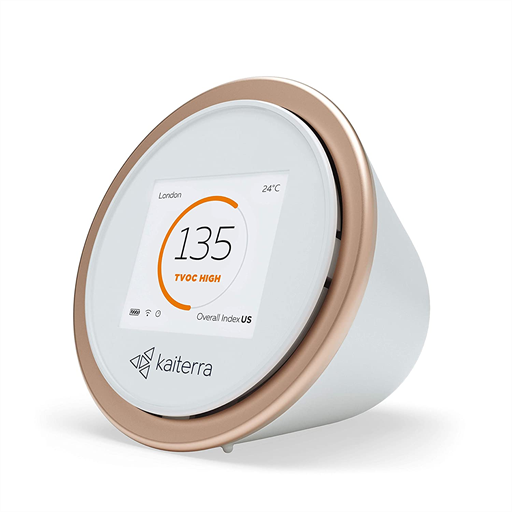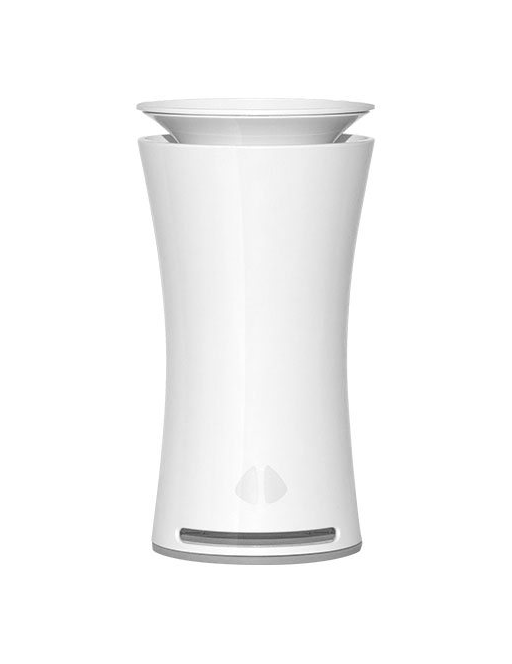Six Tips to Guarantee Improved Indoor Air Quality

Levels of outdoor pollution from transport, fossil fuel burning and industry are on the increase, but few of us realise that the air inside our homes and workplaces isn't always as healthy as we would like it to be. To help you, your family, and work colleagues breathe easier, we have formulated six steps anyone can implement right away.
About Indoor Air Quality
Indoor air quality is the sum of indoor air characteristics that can affect a person's health and wellbeing. The quality of indoor air is affected by both indoor and outdoor sources. Outside sources known to degrade indoor air quality include smoke, transport emissions, and industry, while common indoor causes of poor air quality are; flueless gas heaters, cleaning products, aerosols as well as cigarette and bushfire smoke.
Australians spend, on average, 90% + of their time indoors. If you're breathing suboptimal or polluted air, you risk immediate and long term health impacts. Examples of air-related health impacts can range from mild skin irritation to headaches and fatigue, or more severe ailments such as respiratory diseases, heart disease, and cancers. The extent of health impacts will vary significantly from person to person, depending on several factors, including age and pre-existing medical conditions.
Examples of common Air Pollutants in homes include;
- Carbon Dioxide (CO2)
- Particulate Matter (PM2.5)
- Nitrogen Dioxide (NO2)
- Carbon Monoxide (CO)
- Ozone (O3)
- Volatile Organic Compounds (VOC)
For more information on each of the six parameters mentioned above, see the article 'The 5 Best Air Quality Testers For Home Use'.
Six Tips to Improve Indoor Air Quality
1. Control the Source
One of the most effective ways to improve indoor air quality is to eliminate or control pollution at its source. Examples include; using ventilation fans with cookers, employing equipment as recommended by manufacturers (e.g., only firing-up BBQs and outdoor gas heaters outdoors), and reducing the use of known air quality deteriorates, such as aerosols.
2. Ventilation
Adequate ventilation will dilute and remove pollutants, so we encourage the regular maintenance of ventilation systems. Ensure your HVAC system is properly maintained and cleaned at least annually. If your outside air is fresh, open some windows and circulate air through your interior space.
3. Mindful Product Use
Pollution emits from many everyday household products during operation and storage. Paints, varnishes, fuels, and overheated cooking oils are often to blame. Try to look for fragrance-free or naturally-scented products, and reduce your use of aerosol sprays. Of course, ensure adequate ventilation and store all products away correctly when not in use.
4. Healthy Humidity
When indoor humidity is too high mould can flourish. When it is too low, eyes, nostrils, and skin will feel uncomfortably dry. Alleviate these problems by keeping interior humidity levels around 30-50%. Tips to keep humidity low include:
- Vent the clothes dryer to the outside
- Use an exhaust fan when cooking and showering; and
- Avoid overwatering house plants.
5. Smoke
Smoke from cigarettes is chock-full of chemicals. The impact of first and secondhand smoke in indoor environments is tremendous. Avoid hazardous indoor air quality by smoking outdoors, away from open windows.
6. Use an Air Quality Meter
Using an indoor air quality meter is the most accurate and efficient way to detect air quality issues.
Indoor Air Quality Meter Examples
The Instrument Choice Scientists have chosen to profile two excellent examples of indoor air quality meters that will suit most applications.
uHoo Indoor Air Quality Sensor
Product Code: IC-uHooIndoorAirQualitySensor
The IC-uHooIndoorAirQualitySensor makes use of WIFI to send data to a free UHoo mobile application. The app displays both current and historical data while enabling the sharing of collected information with family and friends, and alerts and alarms to notify you in real-time when your air quality is suboptimal.
Specifications:
Measures: Temperature, Humidity, Carbon Dioxide, VOC, Particulate Matter, Air Pressure, Carbon Monoxide, Ozone, and Nitrogen Dioxide.
Laser Egg + Chemical
Product Code: IC-LE-201
The IC-LE-201 is a smart air quality monitor that measures and reports in real-time fine dust particles, smog (PM2.5), as well as harmful chemicals (VOCs).
Specifications:
Measures: PM2.5, Total Volatile Organic Compounds (TVOC), Temperature and Humidity
There is a laser egg model that measures PM2.5, Carbon Dioxide, Temperature and Humidity (IC-LE-202), and PM2.5, Temperature and Humidity (IC-LE-200)
Conclusion
Applying the six tips our team has recommended above will improve the air quality of your home or office. Air quality meters are easy to use, and the data captured will remove any guesswork when managing indoor air quality and assessing indoor air quality trends.
For more information on indoor air quality meters, speak with an Instrument Choice Scientist! We're here to help! Call 1300 737 871 or email [email protected].
Click here to view the extensive range of indoor air quality meters available at Instrument Choice.
Also interesting
Do you already have a home weather station? Are you considering buying a weather station, but you’re unsure of how much maintenance is required? Would you like some maintenance tips that Instrument Choice scientists insist are essential to prolonging the life of your device, that will ensure accurate results?
Look no further!

A salinity meter is a water quality-indicating scientific instrument used to obtain quick estimations of the amount of dissolved salt present in a water sample. There is an extensive range of salinity measuring devices available, each with different specifications. So, to help you select the best salinity meter for your application, we have put together a glossary of key terms and definitions you are bound to find in salinity meter specifications.


